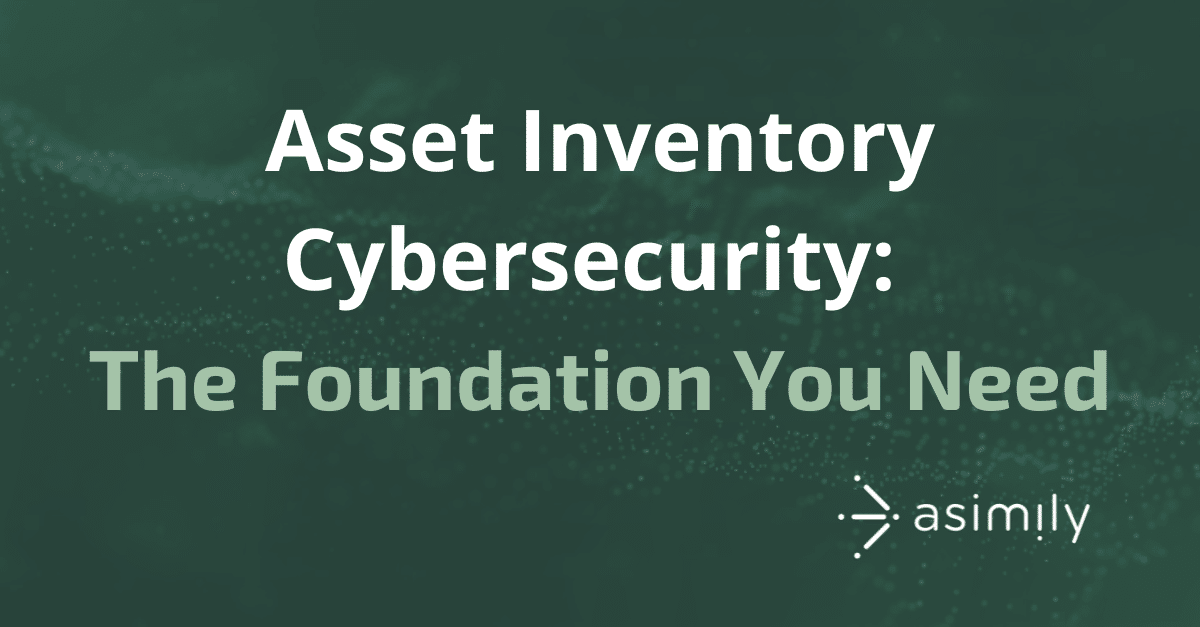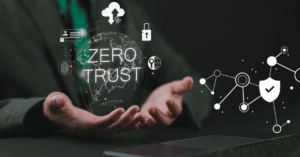Asset Inventory Cybersecurity: The Foundation You Need

In today’s hyper-connected world, organizations are grappling with an explosion of IoT, OT, and IoMT devices. The average number of connected cyber assets under management has exploded in the past few years, with research finding that cybersecurity teams have to corral an average of 165,000 assets. This asset landscape can include cloud workloads, on-premises servers, cloud-based infrastructure, and Internet of Things (IoT) devices.
These devices enable innovation and efficiency but also introduce new challenges in security, visibility, and management. The most foundational piece of securing these environments is listing and classifying all connected devices. Without an accurate inventory, even the most advanced security strategies can falter.
Many solutions strive to provide accurate visibility into an organization’s entire connected device ecosystem but they apply limited and antiquated methodologies. With the expansive growth of IoT, these techniques do not adequately index and understand all of an organization’s devices. It’s time to rethink how we approach device classification—not just as a technical necessity but as a strategic enabler for security and operational excellence.
What is an Asset Inventory?
At its core, device classification is about understanding what’s on your network. But in practice, it goes far deeper than that. A precise inventory of devices provides the foundation for everything from risk management to compliance to incident response. Without a clear picture of what devices are present, where they’re located, and what they’re doing, organizations are left vulnerable to blind spots that attackers can exploit.
Understanding the full scope of network-discoverable assets attached to the system architecture is a vital component of building a strong cybersecurity strategy. Any potentially unknown asset can create the risk of an attack traversing the network architecture and locking down critical data before the cybersecurity team can fully respond. A comprehensive asset inventory can reduce the possibility of that happening.
How Asset Inventories Power IoT Cybersecurity
Today, organizations manage many digital and physical assets that connect to the Internet. These include workstations, servers, cloud workloads, IoT devices, and cloud-based applications. This does not include the assets that IT does not manage or know about. It also does not consider the ones that are underutilized and less visible to IT.
Achieving the needed level of visibility to reduce risk is easier said than done. The sheer diversity of devices—from industrial control systems to medical equipment to everyday IoT gadgets—makes traditional approaches to inventory management insufficient.
What’s more – shadow IT remains a consistent problem in the enterprise, including in the IoT realm, with employees regularly signing up for new services or bringing in new devices without the knowledge of the IT team. This creates a major risk for the organization, especially in the face of a complex threat landscape. For this reason, building an asset inventory is necessary to develop a comprehensive cybersecurity strategy.
As long as the asset is tracked on the inventory, cybersecurity teams can protect it and keep those defenses up to date. This practice also helps security teams ensure that they’ve applied the appropriate security controls to every asset. Legacy methods and technologies often rely on manual input or inefficient scanning practices, which can be incomplete or quickly outdated. What’s needed is a more dynamic, intelligent approach.
Best Practices to Consider in Building an Asset Inventory
Building an asset inventory involves a combination of tactics. To start with, organizations likely have some catalog of assets that the IT team has installed or implemented over time. In hospitals, this can include equipment purchased for patient care like MRIs or mobile infusion pumps. Manufacturing facilities have operational technology that’s used as part of the factory floor and accessible via an internet connection for monitoring and remote maintenance.
Ideally, the list of assets that IT already knows about is likely stored in a CMDB, internal asset management system, or some other central record. This core data serves as the baseline for building the asset inventory.
Once the IT or security team has this core information cleaned up and accurate to what they know about, the next step is finding the assets that they don’t know about. To do this, teams can use passive monitoring or active scanning to see which assets are connected to the network.
The key difference between the two methods is whether teams send out active probes throughout the network to map connections and build the network topology. Both methods are effective, but passive network monitoring tends to take longer than actively sending probes to find what assets are connected.
The result of this process is a network map. This map shows how known assets connect with each other. It also shows how they connect with unknown assets linked to corporate systems.
Known assets should have a particular signature when they’re accessing network resources. Once an unknown asset appears, IT and security teams can investigate to gather information like:
- Asset name
- Asset version
- Possible vulnerabilities
- Expected communication behavior
For IoT devices attached to the network, organizations should look to collect information like:
- Operating system
- IP address
- MAC address
- Port numbers
- Applications
- Hostname
- Version number
The idea here is to surface as much information as possible from the discovered asset. Once teams know what the asset is, they can determine whether or how to secure it. They may also seek to remove the asset, such as if they find an old database that is no longer used. Eliminating unmonitored and unmanaged assets can ultimately reduce the risk of a successful cyberattack.
These basic necessities sit at the core of asset inventory management and classification. Asimily’s approach to asset inventory management helps streamline these processes with advanced capabilities that lead to more effective risk mitigation.
Better Classification Leads to Better, More Actionable Visibility
Modern device classification solutions are transforming how organizations gain visibility into their networks. By leveraging passive data collection techniques such as AI/ML analysis of network traffic patterns and deep packet inspection, it’s now possible to build a real-time inventory without disrupting operations. This shift toward passive monitoring is critical in environments where uptime is non-negotiable—such as healthcare or manufacturing.
But classification doesn’t stop at identifying device types. Advanced solutions like Asimily go further by integrating external data sources like vulnerability scanners, CMDBs, and DHCP services to enrich device profiles with critical details such as operating systems, firmware versions, and patch levels. This enriched inventory provides actionable insights that go beyond simple categorization—it enables smarter decision-making across security and IT teams.
Preparing for the Future of IoT: Onboarding New Devices
Initial asset discovery is the first piece of the device security puzzle. It’s incredibly easy for employees to connect new assets to the corporate infrastructure without asking the central IT team for their input. As a result, there needs to be asset discovery processes running regularly.
This ensures that the inventory is kept up to date and new assets are not missed. This future-proofing is especially important when considering Shadow IT. Immediate detection of new devices—even before they’re fully classified—can help organizations address Shadow IT challenges proactively rather than reactively.
The Asimily platform checks and scans networks to automatically find any connected IoT devices. It captures the device model, firmware version, MAC address, and other data. This insight creates a better asset inventory. It helps IT and security teams understand which assets connect to their network, how they are utilized, and where they are located.
One of the most exciting developments in this space is the ability to adapt to new devices and protocols as they emerge. The IoT landscape is constantly evolving, with new manufacturers entering the market and new technologies being introduced. Solutions like Asimily that can quickly parse unfamiliar communication protocols ensure that organizations aren’t caught off guard by the next wave of connected devices.
Addressing Legacy Systems and Complex Architectures
While much attention is given to cutting-edge IoT devices, many organizations still rely on legacy systems that are no longer supported by manufacturers. These systems often represent some of the highest-risk assets in an environment due to their lack of updates or patches. Accurate classification ensures these devices aren’t overlooked and allows teams to prioritize their protection.
Asimily can tackle more complex inventory challenges, such as serial-attached devices and parent-child relationships between assets. These capabilities provide a more complete picture of how devices interact within an ecosystem—a crucial insight for both security teams and operational leaders.
Moving Beyond Predefined Device Categories
Another area where device classification is evolving is customization. Organizations increasingly want the ability to define their own groupings for devices based on their unique needs rather than relying solely on vendor-determined categories. This flexibility allows for more tailored policies and workflows that align with an organization’s specific goals.
Inventory Management Leads to Better Vulnerability Analysis & Prioritization
Vulnerability identification and prioritization are the next logical benefit of a comprehensive asset inventory. Once teams have an accurate inventory of their assets and all the vulnerabilities, they can start to prioritize resolving those issues based on risk to the business. Integrate continuous monitoring, and it becomes an engine to regularly identify and resolve weaknesses before they impact critical systems.
Asimily also identifies vulnerabilities within the IoT device through comparisons with data sources like EPSS (Exploit Prediction Scoring System), Software Bills of Material (SBOMs), Common Vulnerability and Exposure (CVE) lists, and NIST Guidelines. The platform then assists with prioritizing the top 2% of problem devices that have a high likelihood of exploitation and high impact if compromised.
In summary, accurate device classification is not just about knowing what is on your network. It is also about building a foundation for a culture of cybersecurity.
- Proactive Risk Management: By understanding which devices are vulnerable or out-of-date, organizations can prioritize remediation efforts more effectively.
- Streamlined Compliance: Regulatory requirements often depend on having an accurate inventory of assets. Accurate classification makes this process easier.
- Improved Incident Response: When anomalies arise, having clear device information helps teams respond quickly and effectively.
Ultimately, accurate classification empowers organizations to move from reactive firefighting to proactive management—a shift that’s essential in today’s complex threat landscape.
Automated and Actionable Visibility with Asimily
As IoT adoption continues to accelerate, so too will the challenges associated with managing these environments. Accurate device classification isn’t just a technical feature—it’s a strategic capability that underpins effective security and operational resilience.
Organizations should view this not as a one-time project but as an ongoing commitment to visibility and control. By leveraging Asimily, organizations can offset the manual tasks and heavy lifting associated with managing a device fleet.
With Asimily, security teams gain better insight into all assets connected to their systems. They can see where the risks of attack are highest. Asimily provides information that makes companies safer and can reduce the chances of a successful cyber attack.
Set up a meeting with an Asimily expert. They can help you create a better asset inventory for improved cybersecurity today.
Related Reading:
Securing Your IoT Ecosystem: The Role of Cyber Asset Attack Surface Management (CAASM)
Secure Every IoT Device.
Automatically.
Cyber threats move fast — so should you. Asimily gives instant inventory and smart, prioritized risk mitigation insights for every IoT, OT, and IoMT device — so you can take action before threats strike.




